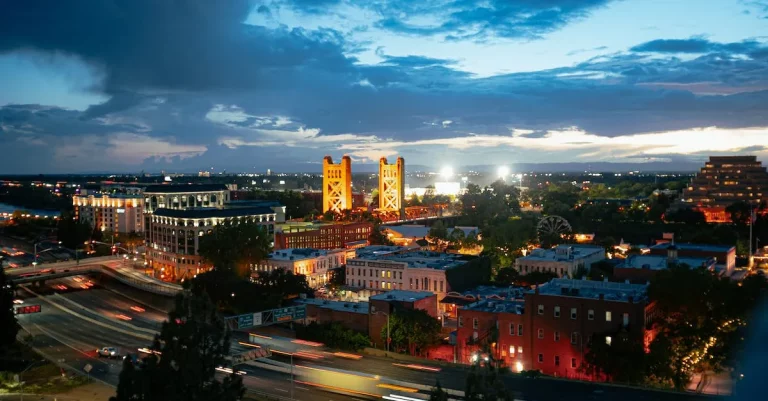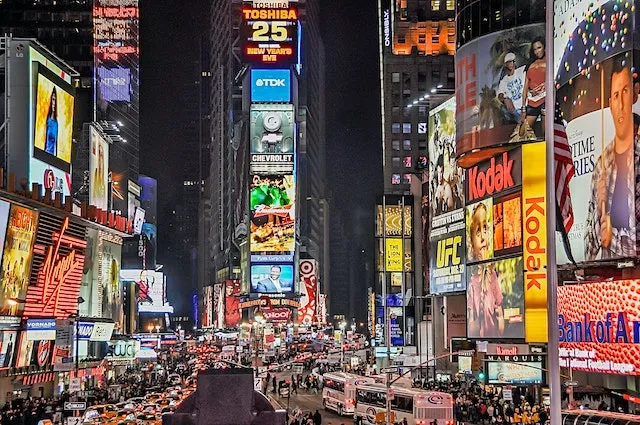Defining The Regions Within Northern California
With its sprawling geography, Northern California encompasses a diverse array of landscapes and cultural regions. But what exactly constitutes Northern California and its sub-regions? If you’re curious where the boundaries lie between NorCal, the Bay Area, and the North Coast, this guide provides an in-depth look at how state residents define their northern territories.
In brief, Northern California refers to the northern half of the state above the Tehachapi Mountains. But popular consensus divides NorCal into the Bay Area, North Coast, Gold Country, Shasta Cascade, and more – each with distinct attractions.
Northern California vs Southern California
When it comes to California, many people often assume that the entire state is similar in terms of culture, climate, and geography. However, there are distinct differences between the northern and southern regions of the state.
Let’s take a closer look at these differences and define the regions within Northern California.
Defining the Northern Border
The northern border of California is commonly considered to be the line where the state meets Oregon. This region includes cities such as Redding, Chico, and Eureka. Northern California is known for its stunning natural beauty, with vast forests, majestic mountains, and picturesque lakes.
It is home to several national parks, including Redwood National and State Parks, which are famous for their towering redwood trees.
One of the defining features of Northern California is its cooler climate. Due to its proximity to the Pacific Ocean and the coastal mountain ranges, this region experiences milder temperatures compared to its southern counterpart.
The cooler climate allows for lush vegetation, making Northern California a haven for outdoor enthusiasts and nature lovers.
Distinguishing Cultural Differences
While both Northern and Southern California share a laid-back and progressive vibe, there are noticeable cultural differences between the two regions. Northern California is often associated with a more bohemian and countercultural atmosphere.
The cities of San Francisco and Berkeley are known for their liberal politics, vibrant arts scenes, and tech innovation.
On the other hand, Southern California is famous for its glamorous and entertainment-oriented culture. Cities like Los Angeles and San Diego are home to the film industry and attract aspiring actors and musicians from all over the world.
The region is also known for its beautiful beaches, sunny weather, and outdoor lifestyle.
It’s important to note that these distinctions are generalizations, and there is diversity within both regions. California is a state that embraces a wide range of cultures, lifestyles, and industries.
Whether you prefer the scenic beauty of Northern California or the glitz and glamour of Southern California, the state offers something for everyone.
Major Sub-Regions of Northern California
The Bay Area
The Bay Area is one of the most populous and well-known sub-regions of Northern California. It encompasses cities such as San Francisco, Oakland, and San Jose, and is famous for its iconic landmarks like the Golden Gate Bridge and Alcatraz Island.
The Bay Area is a hub for technology and innovation, with Silicon Valley located in the southern part of the region. It offers a diverse cultural scene, with world-class museums, theaters, and restaurants.
Visitors can enjoy the scenic beauty of the area by exploring its numerous parks and waterfronts.
Wine Country
Wine Country, also known as the Napa Valley and Sonoma County, is a paradise for wine enthusiasts. This sub-region is renowned for its vineyards and wineries, producing some of the finest wines in the world.
Visitors can embark on wine tasting tours to experience the flavors and aromas of the region’s award-winning wines. Wine Country also offers picturesque landscapes, with rolling hills and charming towns. It is a popular destination for romantic getaways and relaxing retreats.
North Coast
The North Coast of Northern California is a rugged and scenic sub-region that stretches along the Pacific Ocean. It is characterized by its stunning coastline, towering redwood forests, and pristine beaches.
Visitors can explore the Redwood National and State Parks, home to some of the tallest trees on Earth. The North Coast also offers opportunities for hiking, camping, and wildlife spotting. It is a haven for outdoor enthusiasts and nature lovers.
Gold Country
Gold Country is a historically significant sub-region of Northern California, known for its connection to the California Gold Rush of the mid-1800s. This area is dotted with charming towns that still retain their gold rush-era charm.
Visitors can explore historic sites, such as Marshall Gold Discovery State Historic Park, where gold was first discovered in California. Gold Country also offers opportunities for outdoor activities, such as rafting, fishing, and hiking.
Shasta Cascade
The Shasta Cascade region is a hidden gem in Northern California, offering diverse landscapes and outdoor adventures. It is home to the majestic Mount Shasta, a popular destination for hiking and skiing.
The region also boasts numerous lakes, rivers, and waterfalls, making it a great place for water activities like boating, fishing, and kayaking. Visitors can explore Lassen Volcanic National Park, known for its volcanic features and scenic trails.
Shasta Cascade is a paradise for outdoor enthusiasts seeking untouched natural beauty.
Notable Cities and Geographic Features
San Francisco
San Francisco is one of the most iconic cities in Northern California. Known for its hilly streets, colorful Victorian houses, and the iconic Golden Gate Bridge, it is a must-visit destination for travelers from around the world.
The city offers a diverse range of attractions, from the bustling Fisherman’s Wharf to the historic Alcatraz Island. With its vibrant food scene, lively cultural events, and stunning views of the Pacific Ocean, San Francisco never fails to impress visitors.
Lake Tahoe
Lake Tahoe is a breathtakingly beautiful freshwater lake located in the Sierra Nevada Mountains. It is renowned for its crystal-clear waters, stunning mountain landscapes, and year-round outdoor activities.
From skiing and snowboarding in the winter to hiking, boating, and swimming in the summer, Lake Tahoe offers something for everyone. The lake straddles the border between California and Nevada, and its shores are dotted with charming towns and resorts, making it a popular vacation destination for nature lovers and adventure seekers.
Yosemite National Park
Yosemite National Park is a natural wonderland that attracts millions of visitors each year. With its towering granite cliffs, spectacular waterfalls, and ancient giant sequoia trees, it is a paradise for outdoor enthusiasts.
The park offers a wide range of activities, including hiking, camping, rock climbing, and wildlife watching. Yosemite Valley, with its iconic landmarks such as El Capitan and Half Dome, is a must-see destination within the park.
Whether you are a seasoned adventurer or a casual nature lover, Yosemite National Park is sure to leave you in awe of its beauty.
Redwood Forests
The Redwood Forests in Northern California are home to some of the tallest and oldest trees on Earth. These majestic coastal redwoods can reach heights of over 300 feet and can live for more than 2,000 years.
Walking through the quiet and serene forest, surrounded by these towering giants, is a humbling experience. The Redwood National and State Parks preserve these ancient trees and offer visitors the chance to explore the forest through hiking trails and scenic drives.
It is truly a magical place that showcases the wonders of nature.
Climate Differences Across Northern California
When it comes to climate, Northern California offers a diverse range of conditions due to its vast geographical features. From the stunning Mediterranean Coast to the majestic Sierra Nevada Mountains, each region within Northern California has its own unique climate characteristics.
Mediterranean Coast
The Mediterranean Coast of Northern California is known for its mild and pleasant climate. Influenced by the Pacific Ocean, this region experiences cool summers and mild winters. With average temperatures ranging from 60°F (15°C) to 75°F (24°C), it provides the perfect conditions for growing a variety of crops, including grapes for the renowned wine regions of Napa and Sonoma.
The coastal fog that rolls in during the summer months helps to moderate the temperatures, making it a comfortable destination for beachgoers and outdoor enthusiasts alike.
Sierra Nevada Mountains
The Sierra Nevada Mountains, towering over Northern California, offer a completely different climate compared to the coastal areas. As you ascend in elevation, the temperatures drop and the precipitation increases.
The higher elevations of the Sierra Nevada Mountains experience colder winters with heavy snowfall, making it a popular destination for winter sports enthusiasts. Summers are generally mild and pleasant, with cooler temperatures compared to the valleys below.
The diverse microclimates within the Sierra Nevada Mountains provide a wide range of habitats for various plant and animal species.
Rain Shadow Effect
The Rain Shadow Effect is a phenomenon that occurs when a mountain range blocks the prevailing moisture-laden winds, resulting in drier conditions on the leeward side. In Northern California, the Coast Range acts as a barrier, causing a rain shadow effect in the Central Valley.
As a result, the Central Valley experiences hot and dry summers, with temperatures reaching over 100°F (38°C) and limited precipitation. This climate is ideal for agriculture, as it allows for the cultivation of crops such as almonds, walnuts, and tomatoes.
Understanding the climate differences across Northern California is essential for both residents and visitors. Whether you prefer the mild coastal climate, the mountainous terrain, or the dry conditions of the Central Valley, Northern California offers a climate to suit every preference.
Cultural Distinctions Between NorCal Regions
Progressive Politics
One of the cultural distinctions between the regions within Northern California is their differing political ideologies. San Francisco, for example, is known for its progressive politics and has been a leader in social and environmental activism.
The city has a long history of supporting liberal causes, such as LGBTQ rights and climate change action. In contrast, other regions in NorCal may lean more conservative, with different priorities and political leanings.
Marijuana Culture
Another cultural distinction within Northern California is the prevalence of marijuana culture. The region is famous for its thriving cannabis industry, with Humboldt County being a hub for marijuana cultivation.
The legalization of recreational marijuana in California has further boosted this culture, with cannabis dispensaries and events becoming increasingly common. This unique aspect of NorCal’s culture has attracted tourists and entrepreneurs alike, contributing to the region’s economy and cultural identity.
Farming Traditions
Northern California is also known for its rich farming traditions, which vary across different regions. The fertile lands and favorable climate have made agriculture a significant part of the region’s economy.
In the Central Valley, for example, you’ll find vast stretches of farmland producing crops such as almonds, tomatoes, and grapes. In contrast, the wine country of Napa Valley and Sonoma is renowned for its vineyards and wineries.
The farming traditions in these regions have shaped the local culture, with wine tasting and farm-to-table dining experiences being popular attractions.
Conclusion
With its array of distinct landscapes and regional cultures, Northern California’s diversity rivals its vast size. But popular consensus divides NorCal into the Bay Area, North Coast, and Sierra/Cascade regions. Wherever you roam across Northern California, experiencing its majestic natural wonders and dynamic urban hubs will give you a taste of California’s northern spirit.








